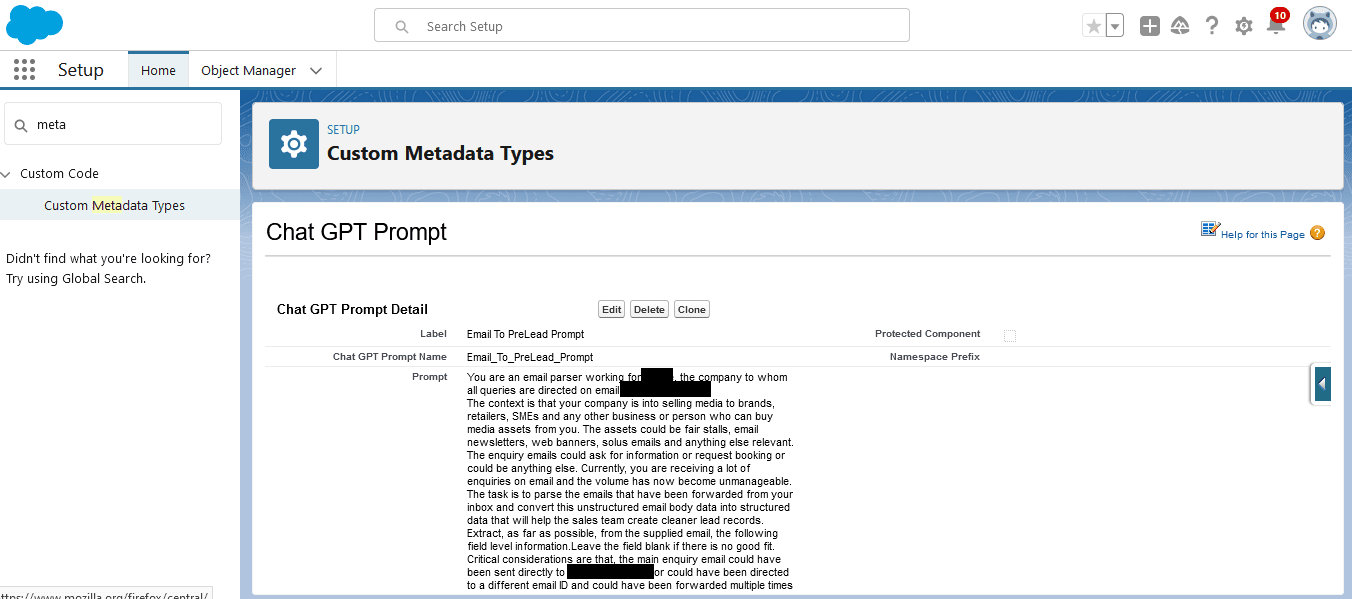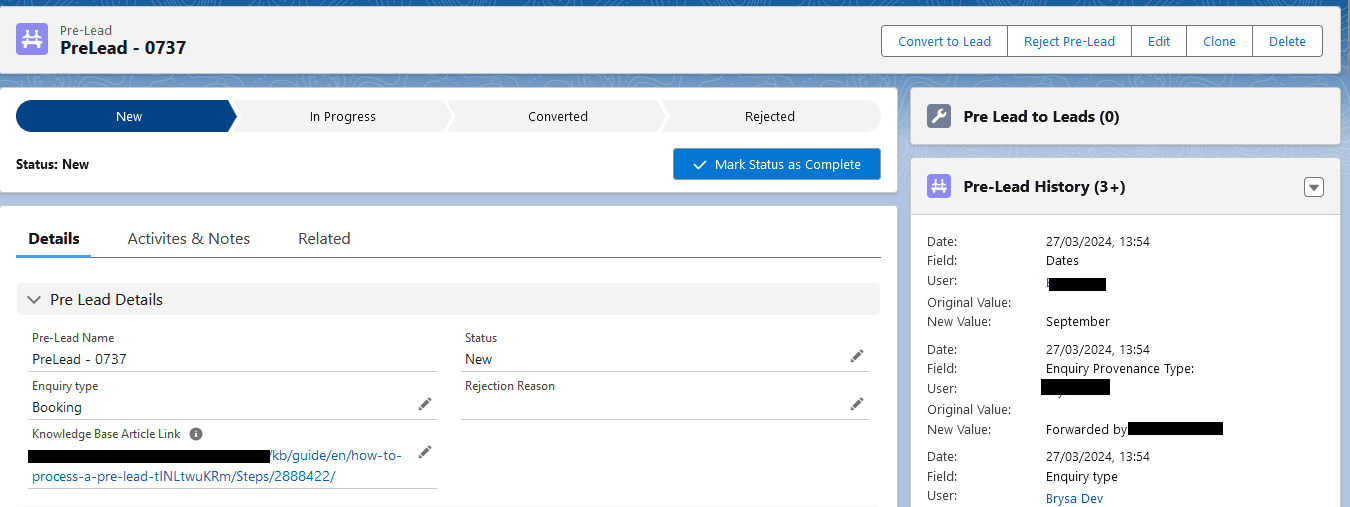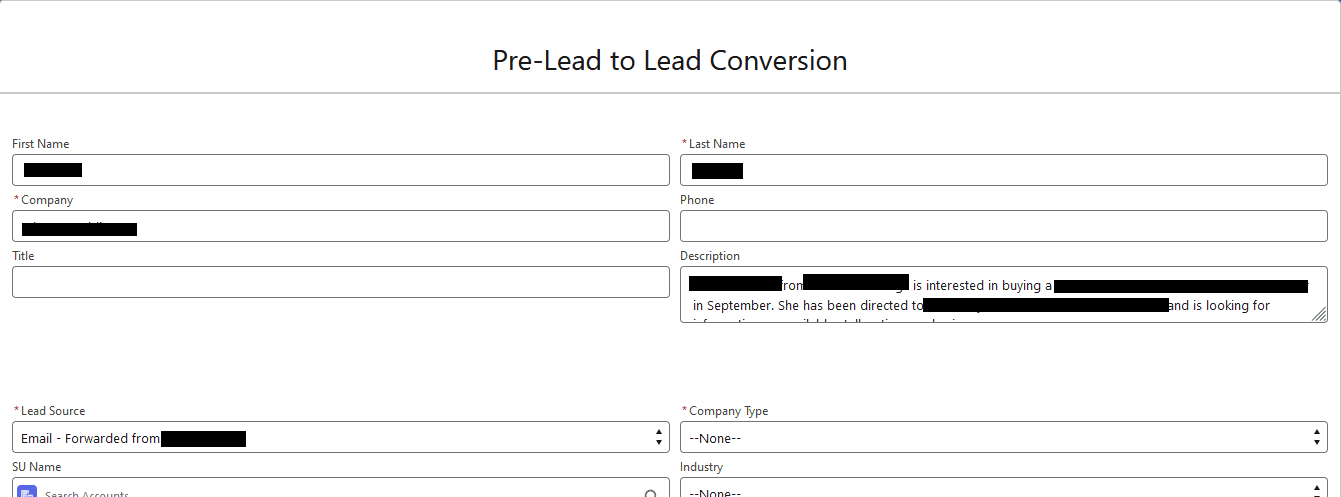Boosting Sales: How Salesforce-ChatGPT integration increased RevOps effectiveness by 100%
- All booking queries are received either via direct emails or forwarded emails from potential customers and partners. Sifting through these emails is onerous and time consuming.
- Inconsistency as different team members have varying standards for entering the lead data.
- This leads to confusion for sales teams and revenue hit as potential clients are not addressed in time.
- Brysa was brought onboard to automatically ingest emails landing in the mailbox and create pre-sales records from the emails.
- Integrate ChatGPT through API to maximise accuracy of pre-lead classification. Minimise the time taken to process Pre-lead and convert it to a new lead, add to an existing lead or mark as junk.
- Introduce a field to identify the source of a pre-lead – direct email or forwarded from potential customers or partners.
- Hundreds of emails automatically processed, categorised and turned into clean Salesforce records for processing from day one.
- Single source of truth established for email channel in Salesforce leading to faster processing time.
- 0% missed leads leading to a magnitude of increase is revenue that would otherwise have potentially been missed.
Our client, operating in the UK market as a publisher with multiple classes of media assets had a critical RevOps problem. Their media@company.com email was used by legacy advertisers and by the partner channels for sending in inquiries about the prices and availability of media assets.
With increasing interest in the market to advertise on assets owned by our client, the volume of queries coming into this inbox increased dramatically over a period of time. Also, since the partner channels were also forwarding on queries they received, there were different types of email queries coming into the inbox. The increase in volume of email queries and the proliferation of types of interest created a volume and a data problem for the client.
The client’s RevOps team used to handle the emails coming into the inbox manually, at a time when the volume was still manageable. As the business grew, so did the team size and it soon became obvious that deploying people to tackle the inbox not only compounded the problems but also created new problems.
- Firstly, the RevOps team had to jump from window to window to check the emails and then to move the deals on in Salesforce.
- Next, they had to ensure the data is rekeyed correctly before processing.
- Then there was the problem of classifying the various types of queries to ensure correct analysis and continuous improvement.
- The solution of having more people handle the volume did help to an extent; however, the problems continued to exist and cause pain to the team.
We intervened technologically by deploying ChatGPT which is a very simple application of the AI tool’s capability. The solution design was straightforward: as soon as an email lands in the client’s inbox, it gets forwarded to a Salesforce or email generated by the relevant Email Services.
The Email Services will receive this email, parse it and hand it over to the next step in the flow which is to structure the email as part of a GPT prompt. The prompt itself was created as a custom metatag to ensure iteration and improvement is easily executed.
We did not go down the Prompt Library route (as such we’re eagerly waiting to get our hands on SalesforceGPT templates/ libraries) since the use case didn’t demand an array of prompts but rather to solve just this one scenario: structuring the unstructured email query.
Once the email and the prompt are packaged, we opened a session with ChatGPT through REST API connections and supplied the prompt. ChatGPT typically responded within a few milliseconds for standard length prompts and took a little while longer for complex, multi-forwarded emails.
The prompt was structured to ensure various scenarios (forwards of forwards; direct; wrongly addressed emails etc.) to be covered. Also, ChatGPT was prompted to return the response in a jquery format with necessary field names for easy processing.
Image 1: ChatGPT prompt as a Custom Metadata Type Record
This ChatGPT response is processed by the Apex in Salesforce org. The response is parsed and a new record created with necessary lookups and field populations. Though we had the option of creating a lead directly, the use case involved a human to process to record before lead creation (to control the quality further).
Hence, we created what we called a pre-lead record that could be converted to a lead by a simple click thus, populating all the critical lead information automatically. As an aid to the user processing the pre-lead, the original email chain was attached to the record so they can peruse this information without leaving Salesforce and opening the inbox.
Image 2: a record created from ChatGPT structured data output
Image 3: Conversion of the interstitial record to a Lead
In the first month of the launch, the team were able to handle 100s of emails coming into the company as inquiries and orders without leaving Salesforce leading hours of saved time and increase in revenue from this channel. The accuracy of data collection improved dramatically leading to better analysis and right deployment of resources. The team continues to use this on a daily basis now.




